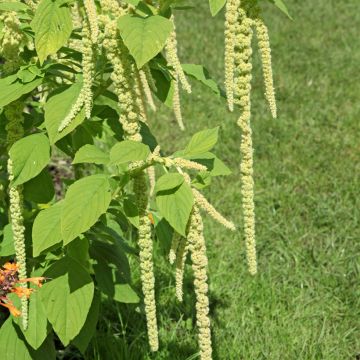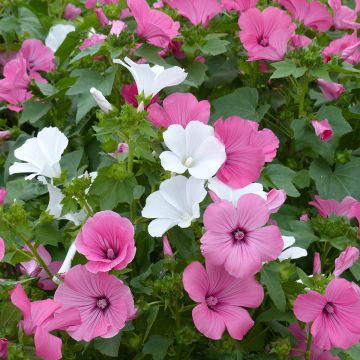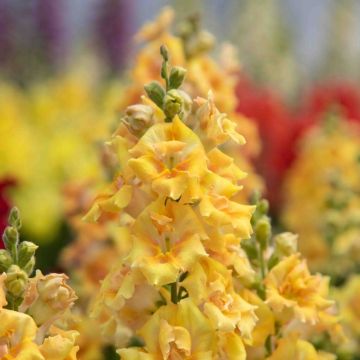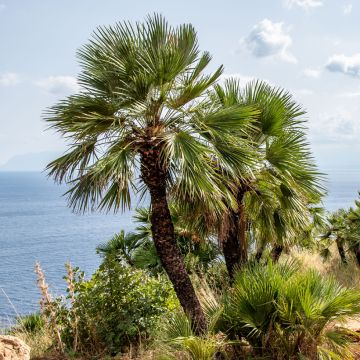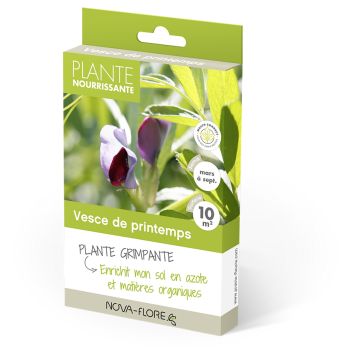

Statice suworowii
Statice suworowii
Psylliostachys suworowii
Sowbread of Suvorov, Suvorov's Larkspur
Special offer!
Receive a €20 voucher for any order over €90 (excluding delivery costs, credit notes, and plastic-free options)!
1- Add your favorite plants to your cart.
2- Once you have reached €90, confirm your order (you can even choose the delivery date!).
3- As soon as your order is shipped, you will receive an email containing your voucher code, valid for 3 months (90 days).
Your voucher is unique and can only be used once, for any order with a minimum value of €20, excluding delivery costs.
Can be combined with other current offers, non-divisible and non-refundable.
Home or relay delivery (depending on size and destination)
Schedule delivery date,
and select date in basket
This plant carries a 6 months recovery warranty
More information
We guarantee the quality of our plants for a full growing cycle, and will replace at our expense any plant that fails to recover under normal climatic and planting conditions.
Would this plant suit my garden?
Set up your Plantfit profile →
Description
The Limonium suworowii, recently renamed Psylliostachys suworowii, is a little-known species of Statice among gardeners but much more familiar to florists. It is an annual plant that produces numerous thin, sinuous flower spikes in shades of pink to purple. They make excellent cut flowers, both fresh and dried. The flowering stems continue throughout the summer, making this attractive plant suitable for containers, borders, and beds.
The Psylliostachys suworowii is an annual herbaceous plant in the family Plumbaginaceae. It is a wild plant native to Central Asia and Afghanistan. Within a few months, it forms flowering clumps that reach 50 to 70 cm in height and 30 to 40 cm in diameter. The plant develops a dense basal rosette composed of ovate leaves with prominent central veins, either entire or coarsely dentate, measuring up to 12 cm long. Its flowering occurs over several weeks, between June and September or between March and June, depending on the sowing date. It takes the form of branched flowering stems, each ending in a long, dense cylindrical spike and featuring numerous lateral spikes measuring 10 to 15 cm long. Each spike is adorned with many flowers surrounded by a decorative pink calyx. This tubular-based calyx widens into five iridescent lobes that shimmer in the light. The flower itself is barely visible. The flowering is nectariferous. The fruit is a capsule that opens at maturity to release its seeds. This plant readily self-seeds in light soil.
The Psylliostachys suworowii thrives in fertile, moist, well-drained soil in full sun. It tolerates coastal conditions. This plant is among the most beautiful flowers for fresh or dried bouquets. Cut the longest stems possible and hang them upside down in a cool, dry, and well-ventilated place to dry them. This Statice also helps lighten up romantic rose beds. It can be paired with double annual poppies like 'Purple Peony' or 'Ooh la la', Rosea hastate verbenas, or planted near giant dahlias.
Report an error about the product description
Flowering
Foliage
Plant habit
Botanical data
Psylliostachys
suworowii
Plumbaginaceae
Sowbread of Suvorov, Suvorov's Larkspur
Statice suworowii, Limonium suworowii
Central Asia
Other Flower seeds A to Z
View all →Planting and care
Sow from February to May under cover for flowering from June or from September to October under cover for flowering from March.
Sow Statice suworowii seeds in a greenhouse, mini-greenhouse, or a heated room at home on the surface of good compost and cover with vermiculite or a thin layer of compost. Germination takes 7 to 14 days at temperatures between 16 and 20°C. Transplant the young plants, once sufficiently developed, into pots, spacing them 5 cm apart at a slightly lower temperature (12 to 15°C). Gradually acclimatize them to outdoor conditions for 10-15 days before planting them in the open ground, after the last frost, in light, rich, well-drained soil. Space the plants 40 cm apart.
Statice plants are straightforward to grow. They appreciate the sun and well-drained reasonably rich soil. They tolerate salt spray and strong winds well, making them perfect candidates for coastal gardens.
Planting is done in spring on warmed soil. Once in place, remove faded flowers; this stimulates the appearance of new flowers. At the end of the season, if you want to try to preserve the statice, cut back the stems. Statice suworowii needs water to flower all summer. This plant does not appreciate stagnant moisture.
Sowing period
Intended location
Planting & care advice
This item has not been reviewed yet - be the first to leave a review about it.
Similar products
Haven't found what you were looking for?
Hardiness is the lowest winter temperature a plant can endure without suffering serious damage or even dying. However, hardiness is affected by location (a sheltered area, such as a patio), protection (winter cover) and soil type (hardiness is improved by well-drained soil).

Photo Sharing Terms & Conditions
In order to encourage gardeners to interact and share their experiences, Promesse de fleurs offers various media enabling content to be uploaded onto its Site - in particular via the ‘Photo sharing’ module.
The User agrees to refrain from:
- Posting any content that is illegal, prejudicial, insulting, racist, inciteful to hatred, revisionist, contrary to public decency, that infringes on privacy or on the privacy rights of third parties, in particular the publicity rights of persons and goods, intellectual property rights, or the right to privacy.
- Submitting content on behalf of a third party;
- Impersonate the identity of a third party and/or publish any personal information about a third party;
In general, the User undertakes to refrain from any unethical behaviour.
All Content (in particular text, comments, files, images, photos, videos, creative works, etc.), which may be subject to property or intellectual property rights, image or other private rights, shall remain the property of the User, subject to the limited rights granted by the terms of the licence granted by Promesse de fleurs as stated below. Users are at liberty to publish or not to publish such Content on the Site, notably via the ‘Photo Sharing’ facility, and accept that this Content shall be made public and freely accessible, notably on the Internet.
Users further acknowledge, undertake to have ,and guarantee that they hold all necessary rights and permissions to publish such material on the Site, in particular with regard to the legislation in force pertaining to any privacy, property, intellectual property, image, or contractual rights, or rights of any other nature. By publishing such Content on the Site, Users acknowledge accepting full liability as publishers of the Content within the meaning of the law, and grant Promesse de fleurs, free of charge, an inclusive, worldwide licence for the said Content for the entire duration of its publication, including all reproduction, representation, up/downloading, displaying, performing, transmission, and storage rights.
Users also grant permission for their name to be linked to the Content and accept that this link may not always be made available.
By engaging in posting material, Users consent to their Content becoming automatically accessible on the Internet, in particular on other sites and/or blogs and/or web pages of the Promesse de fleurs site, including in particular social pages and the Promesse de fleurs catalogue.
Users may secure the removal of entrusted content free of charge by issuing a simple request via our contact form.
The flowering period indicated on our website applies to countries and regions located in USDA zone 8 (France, the United Kingdom, Ireland, the Netherlands, etc.)
It will vary according to where you live:
- In zones 9 to 10 (Italy, Spain, Greece, etc.), flowering will occur about 2 to 4 weeks earlier.
- In zones 6 to 7 (Germany, Poland, Slovenia, and lower mountainous regions), flowering will be delayed by 2 to 3 weeks.
- In zone 5 (Central Europe, Scandinavia), blooming will be delayed by 3 to 5 weeks.
In temperate climates, pruning of spring-flowering shrubs (forsythia, spireas, etc.) should be done just after flowering.
Pruning of summer-flowering shrubs (Indian Lilac, Perovskia, etc.) can be done in winter or spring.
In cold regions as well as with frost-sensitive plants, avoid pruning too early when severe frosts may still occur.
The planting period indicated on our website applies to countries and regions located in USDA zone 8 (France, United Kingdom, Ireland, Netherlands).
It will vary according to where you live:
- In Mediterranean zones (Marseille, Madrid, Milan, etc.), autumn and winter are the best planting periods.
- In continental zones (Strasbourg, Munich, Vienna, etc.), delay planting by 2 to 3 weeks in spring and bring it forward by 2 to 4 weeks in autumn.
- In mountainous regions (the Alps, Pyrenees, Carpathians, etc.), it is best to plant in late spring (May-June) or late summer (August-September).
The harvesting period indicated on our website applies to countries and regions in USDA zone 8 (France, England, Ireland, the Netherlands).
In colder areas (Scandinavia, Poland, Austria...) fruit and vegetable harvests are likely to be delayed by 3-4 weeks.
In warmer areas (Italy, Spain, Greece, etc.), harvesting will probably take place earlier, depending on weather conditions.
The sowing periods indicated on our website apply to countries and regions within USDA Zone 8 (France, UK, Ireland, Netherlands).
In colder areas (Scandinavia, Poland, Austria...), delay any outdoor sowing by 3-4 weeks, or sow under glass.
In warmer climes (Italy, Spain, Greece, etc.), bring outdoor sowing forward by a few weeks.






























